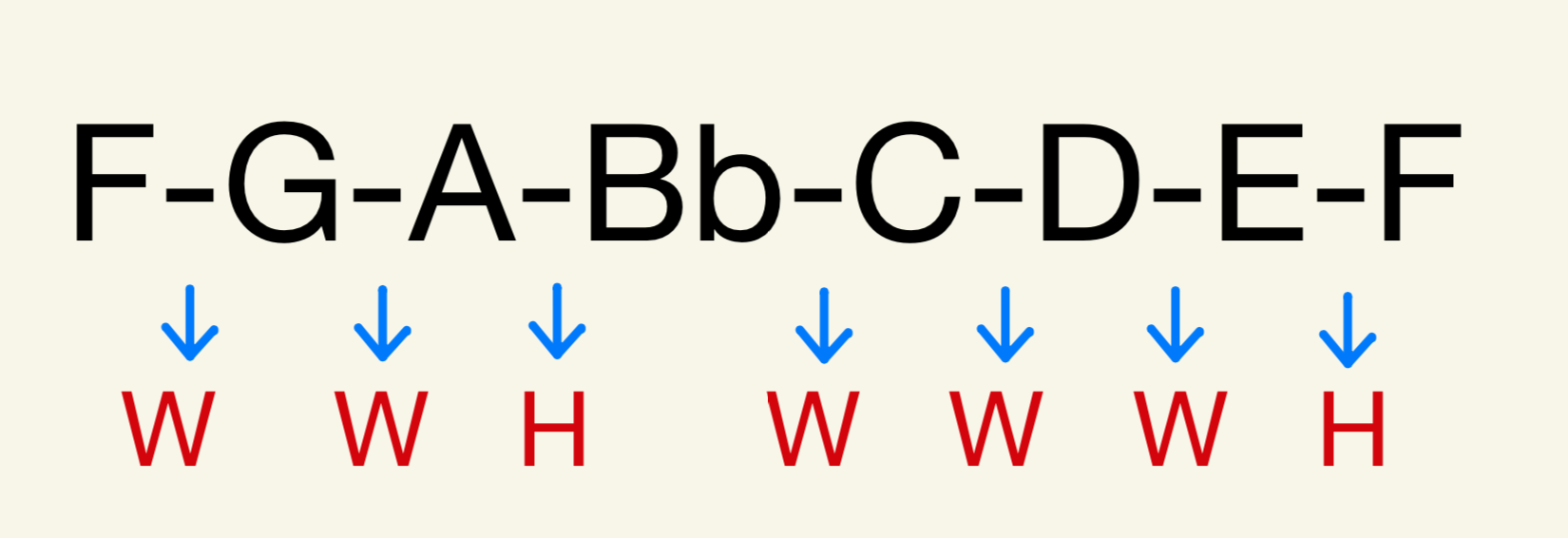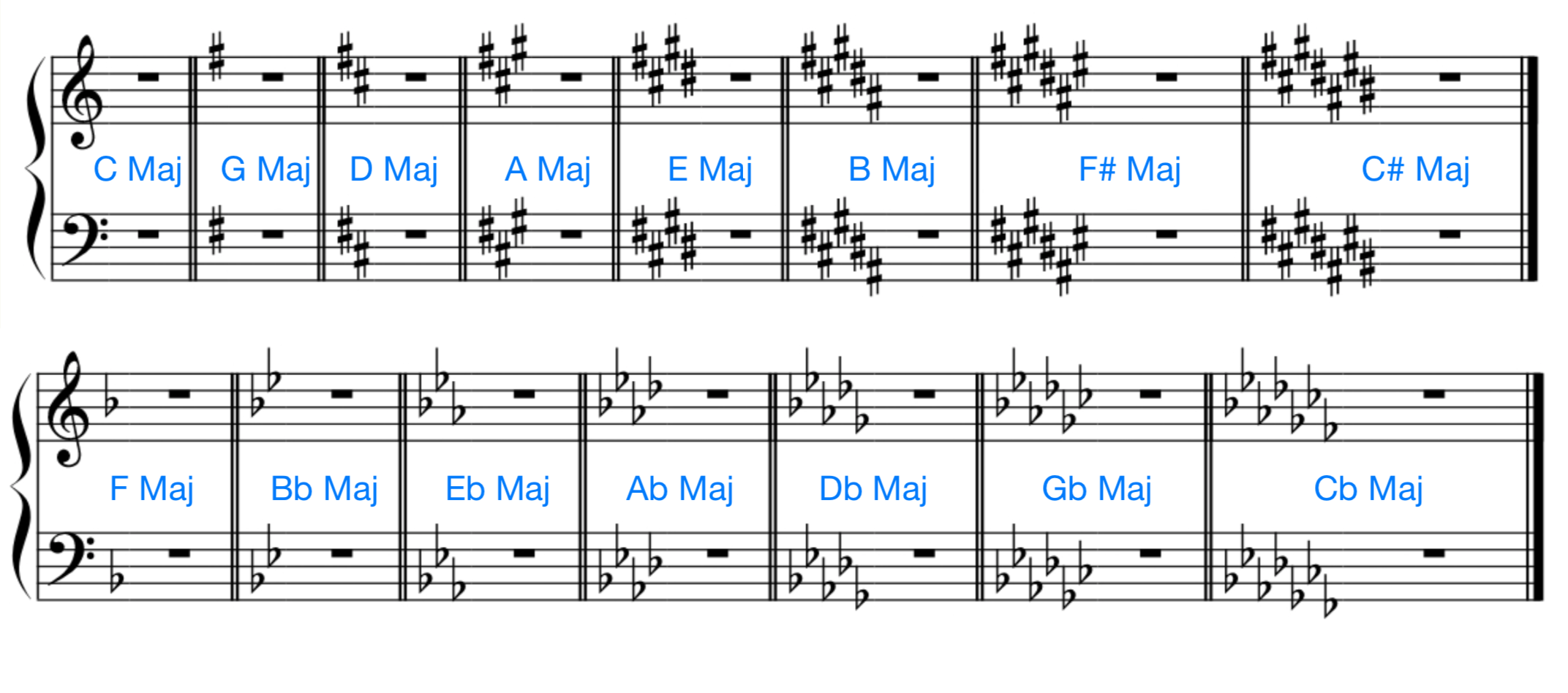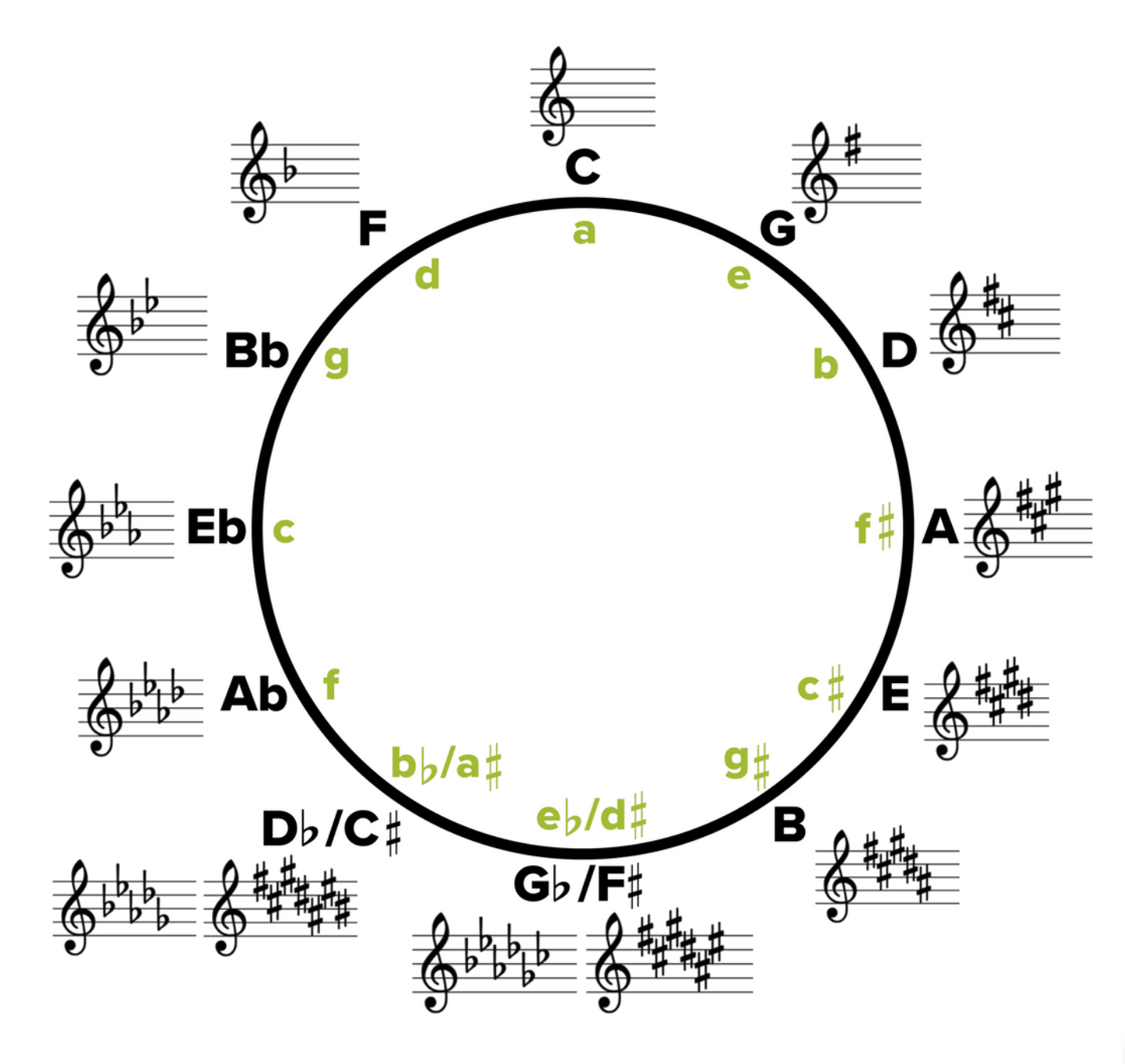1.5 Major Keys and Key Signatures
3 min read•november 2, 2020
Mickey Hansen
AP Music Theory 🎶
72 resourcesSee Units
1.5: Major Keys and Key Signatures
When the majority of a musical passage congregates around the pitches of a major or minor scale, we consider it to be within a certain key. For example, if the notes of an F major scale are used and F is considered a central pitch, the piece of music is referred to as "in the key of F major".
Using the formula of wwHwwwH, which pitches are going to be part of an F major scale? Remember a half-step and whole-step is the distance between each pitch. We can figure this out, based on the chromatic scale written out below:

And to see the work backwards:

You see that in the key of F major, there is only one flat, a Bb.
At the start of a piece of music, there is a key signature that indicates what key you are in, by showing the flats or sharps that will be played in that key.
Since we know the key of F major has one flat, the key signature will reflect that.

Remember that C Major scale? There weren't any flats or sharps.

The key signature is still there! It just shows that there are no flats or sharps to be used, therefore the key is C major.
How many major keys are there in total? 12, one for each note of the chromatic scale. When calculating the 12, enharmonic equivalents are considered as 1 key, even though they have very different key signatures.
Below are all of the different key signatures:
(Maj is short for major—you may frequently see that abbreviation.)

Outside of pure memorization, is there a trick to find out which key we are in?

When looking at the sharps:
- Read the sharps in order from left to right
- The last sharp is your kingpin
- Over which line or space is that last sharp located?
- What is a half-step up from that last sharp?
- Congratulations, you just found your major key!
For example, look above at the measure labeled E Maj. What is the last sharp indicated? That would be a D#. What is a half-step up from a D#? Well, an E, of course!
Are you already asking for the trick for the flats?

There is one key signature with flats that you will need to simply memorize. Look at the table above with the flats. The first key signature just has one flat in the key, and that indicates F Major. Memorized? Great!
For all other flats, here is the trick:
- Read the flats from left to right
- Over which line or space is the second to last flat located?
- Congratulations! You just found your key signature!
- Make sure you keep the flat in the name of the key signature, too
For example, look at the measure labeled Gb major. You will see that the second-to-last flat is, indeed, over a Gb.
The key signatures are all related to one another through the circle of fifths.
The interval of a 5th becomes important when seeing the relation between the keys. If you were to stack 5ths on top of one another, starting on C, you would go through all the major keys and eventually return to C.

Take a look below. You will see that by moving clockwise on the circle, the interval of a 5th brings you to the next key, and you will add a sharp to the key signature on each 5th. By moving counter-clockwise on the circle, the interval will be a 4th and you add a flat with each interval.

The point of the circle of 5ths is to understand which keys are closely related to one another by their proximity on the circle.

In musical compositions, it is easiest to change keys to a key that is close on the circle of 5ths, due to the increased amount of shared pitches in each key.
🦜Polly wants a progress tracker: What is the order of sharps? What is the order of flats? Can you create a mnenomic device to remember the order of each?
Browse Study Guides By Unit
🎵Unit 1 – Music Fundamentals I (Pitch, Major Scales and Key Signatures, Rhythm, Meter, and Expressive Elements)
🎶Unit 2 – Music Fundamentals II (Minor Scales and Key Signatures, Melody, Timbre, and Texture)
🎻Unit 3 – Music Fundamentals III (Triads and Seventh Chords)
🎹Unit 4 – Harmony and Voice Leading I (Chord Function, Cadence, and Phrase)
🎸Unit 5: Harmony and Voice Leading II: Chord Progressions and Predominant Function
🎤Unit 7 – Harmony and Voice Leading IV (Secondary Function)
📝Exam Skills
📆Big Reviews: Finals & Exam Prep

Fiveable
Resources
© 2023 Fiveable Inc. All rights reserved.